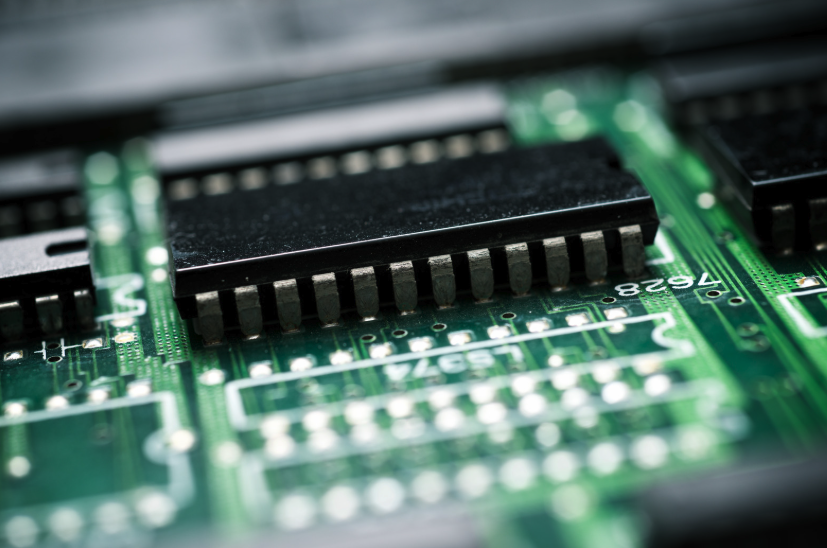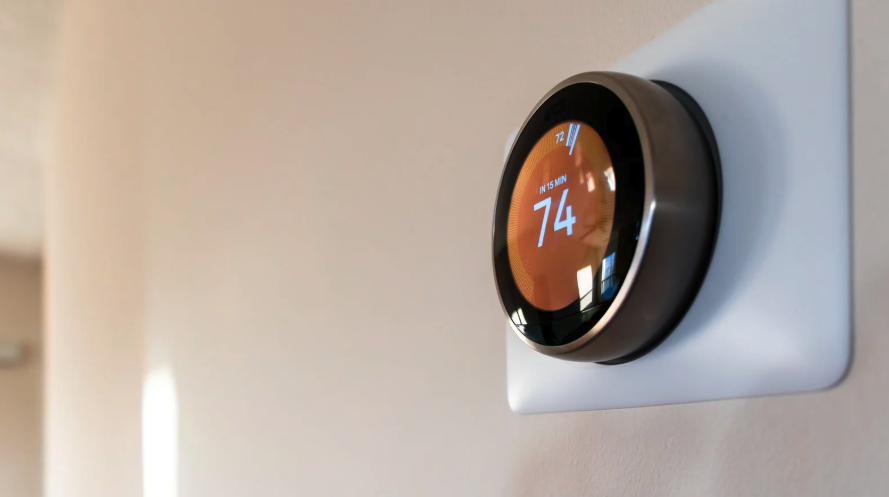Integrated Circuits in Smart Home Devices

More from the Category
Smart home technology has transformed how we live by making everyday tasks easier and homes more secure, while reducing energy usage. From voice-activated assistants to intelligent lighting systems, smart devices are now integral to many modern households. But behind the sleek designs and user-friendly interfaces lies the true engine of innovation: integrated circuits (ICs).
ICs are the unsung heroes powering the functionality, connectivity, and intelligence of smart home devices. They process data, enable wireless communication, and ensure energy efficiency, making them the backbone of the smart home revolution. As the market for smart homes continues to expand, understanding the role of ICs in driving this growth is critical.
This article delves into how ICs enable smart home devices and explores their technologies, applications, and future potential. Whether it’s enhancing energy efficiency, bolstering security, or paving the way for AI integration, ICs are at the core of smart home technology.
Integrated Circuits
At their core, integrated circuits are miniature electronic circuits composed of interconnected components - such as transistors, resistors, and diodes, fabricated onto a single chip of semiconductor material, most commonly silicon. This compact integration allows ICs to perform complex tasks with speed and precision, while occupying minimal space and consuming less power- ideal characteristics for smart home applications. By consolidating critical functions like signal processing, data computation, wireless communication, and power management, ICs provide the intelligence that drives automation and responsiveness in devices ranging from smart thermostats to security systems. Their versatility and efficiency make them indispensable to the seamless operation of today’s connected living environments.
Check out this complete overview of Integrated Circuits
The Role of Integrated Circuits in Smart Home Devices
Integrated circuits enable smart home devices to operate with intelligence, efficiency, and seamless connectivity. These tiny, yet powerful chips are designed to perform tasks processing data, managing power, and enabling wireless communication, which makes them indispensable to the functionality of smart devices.
Connectivity and Control
At a basic level, ICs are responsible for connecting smart home devices to each other and to the broader network. For example, Wi-Fi-enabled smart thermostats rely on wireless communication ICs to connect to home networks, while microcontrollers process user inputs and execute commands. This interplay of connectivity and control allows users to adjust room temperatures remotely or schedule energy-saving routines via mobile apps.
Powering Device Intelligence
ICs bring intelligence to smart home technology by enabling devices to sense, process, and respond to environmental changes. For instance, sensor ICs in smart security cameras detect motion and trigger alerts, while microprocessors in smart speakers handle voice commands to control other devices. Generally speaking, ICs improve the user experience by automating routine tasks.
Driving Energy Efficiency
Power management ICs ensure that devices operate efficiently — and in systems like smart lighting, they optimize power usage based on ambient conditions to reduce unnecessary energy expenditure.
Key Integrated Circuit Technologies in Smart Homes

Different types of ICs serve specialized roles in smart devices, and they deliver the seamless functionality and interconnectivity that users expect. Below, we explore the primary IC technologies driving innovation in smart homes.
Microcontrollers and Microprocessors
Microcontrollers (MCUs) and microprocessors act as the brains of smart devices by processing data and executing commands. These ICs are optimized for embedded systems and provide the computing power necessary for real-time decision-making and device control. For example, MCUs handle temperature regulation in smart thermostats and command execution in voice assistants. ARM Cortex-based microcontrollers are widely used in smart home devices for their energy efficiency and processing capabilities.
Microcontrollers’ low power consumption and versatility also make them essential for battery-powered smart devices like remote sensors and door locks.
Browse Microcontroller and Microprocessor inventory
Wireless Communication ICs
Wireless communication ICs enable smart devices to connect with each other and to networks to form the backbone of smart home technology. These ICs support protocols like Wi-Fi, Bluetooth, Zigbee, Z-Wave, and Matter to deliver seamless device interoperability. Their role in smart homes is to facilitate remote control and integration within smart home ecosystems. For example, Infineon’s AIROC™ Wi-Fi and Bluetooth combo chips enable reliable connectivity in devices like smart speakers and cameras.
These ICs are critical for building interconnected systems and allow users to control multiple smart devices from a single app or voice assistant.
Sensor ICs
Sensor ICs are the eyes and ears of smart home devices that enable them to perceive and respond to their surroundings. They measure parameters such as temperature, motion, light, and air quality to facilitate the automation and intelligence of smart home technology. Their role in smart homes is to enhance user experience through features like motion-triggered lighting or climate control. For example, ICs in smart thermostats detect room temperature and adjust settings to maintain comfort.
Sensor ICs are integral to ensuring smart homes are adaptive and responsive to user needs.
Browse Sensor IC inventory
Power Management ICs
Power management ICs (PMICs) optimize energy usage to keep smart devices operating efficiently, particularly those that are battery-powered or energy-intensive. Their role in smart homes is to regulate voltage, manage charging, and reduce power consumption. For example, PMICs in smart lighting systems adjust brightness based on ambient light levels, conserving energy without sacrificing functionality.
PMICs not only extend device lifespans but also contribute to the overall energy efficiency of smart homes.
Browse Power Management IC inventory
AI and Edge Processing ICs
AI-enabled ICs and edge processors are emerging as a key component of smart devices, because they allow for real-time decision-making without relying on cloud connectivity. These ICs support advanced features like facial recognition, voice command processing, and predictive maintenance. Their role in smart homes is to provide local intelligence, improve response times, and reduce dependence on external servers. For example, AI processors in smart cameras analyze video feeds for motion or object detection to create smarter security solutions.
As smart home technology evolves, the role of AI-enabled ICs will continue to expand and support increasingly sophisticated features.
All of these integrated circuit technologies collectively empower smart home devices to function efficiently, communicate seamlessly, and adapt intelligently to user needs. By increasing device connectivity, intelligence, and energy efficiency, ICs are facilitating the smart home revolution and setting the stage for future innovations in smart devices.
Enhancing Energy Efficiency through ICs

Energy efficiency is a key feature of smart home technology, and integrated circuits play a pivotal role in achieving it. By optimizing power usage, managing energy flows, and enabling smart decision-making, ICs not only reduce the environmental impact of smart homes but also lower operating costs for users.
Power Management ICs: The Backbone of Energy Efficiency
Power management integrated circuits (PMICs) regulate the energy consumed by smart devices and ensure that they operate efficiently without unnecessary waste. These ICs control voltage levels, manage power distribution, and oversee charging in battery-operated devices. For example, in smart lighting systems, PMICs adjust brightness based on ambient light levels to deliver just the right amount of illumination while conserving energy.
In HVAC systems, PMICs are used to optimize power usage by regulating energy flow to heating or cooling units based on room occupancy and temperature. This capability allows smart home devices to strike a balance between comfort and energy savings.
Dynamic Load Management
ICs in smart home devices enable dynamic load management by analyzing energy usage patterns and redistributing power to maintain efficiency. For instance, sensor ICs in smart thermostats can detect when a room is unoccupied and adjust energy output accordingly to prevent unnecessary power consumption.
Additionally, wireless communication ICs facilitate connectivity between devices so they can work together to minimize energy use. A smart home ecosystem can, for example, dim lights and reduce HVAC activity simultaneously when users leave the house, thanks to the interoperability provided by these ICs.
Energy Monitoring and User Insights
ICs integrated with smart energy meters and monitoring systems provide users with real-time data on their energy consumption. These insights empower users to make informed decisions about how and when they use their smart devices. For example, users can schedule energy-intensive tasks like running a smart washing machine during off-peak hours to save on electricity costs.
Smart plugs equipped with ICs can also track the energy usage of individual devices and help users identify and manage high-energy-consuming appliances. By making energy usage visible and actionable, ICs enable smarter and more sustainable consumer habits.
Supporting Renewable Energy Integration
As more smart homes incorporate renewable energy sources like solar panels, ICs play a critical role in managing these systems. Power conversion ICs ensure efficient energy transfer from solar panels to batteries or the grid. Additionally, ICs in energy storage systems regulate charging and discharging cycles to maximize the utility of renewable energy while reducing reliance on non-renewable sources.
A Sustainable Future for Smart Homes
IC-driven energy efficiency not only benefits individual households but also contributes to broader sustainability goals. By reducing energy waste and optimizing the performance of smart devices, ICs help mitigate the environmental impact of growing smart home technology adoption.
From optimizing power usage in everyday devices to enabling the seamless integration of renewable energy, ICs are the unsung heroes of energy-efficient smart homes. As technology advances, their role in enhancing sustainability and lowering energy costs will only grow.
Market Trends and Future Outlook
The smart home technology market is experiencing rapid growth and is projected to expand from $121.59 billion in 2024 to over $630 billion by 2032. This surge is fueled by increasing consumer demand for connected, energy-efficient, and automated solutions. While North America and Europe dominate the market, emerging economies in Asia-Pacific are quickly catching up as costs decrease and infrastructure improves — and integrated circuits are central to this evolution.
A major trend shaping the industry is the integration of artificial intelligence (AI) and edge computing. AI-enabled ICs are driving localized decision-making in devices like smart cameras and climate control systems, reducing reliance on cloud services and improving both privacy and responsiveness. Similarly, the adoption of interoperability standards like Matter ensures seamless communication between devices, with ICs evolving to support these multi-protocol ecosystems.
Sustainability is another key focus, with IC innovations driving energy efficiency and supporting renewable energy integration in smart homes. At the same time, security is becoming a priority, with hardware-level protections in ICs safeguarding data and device integrity.
As affordability increases and regional adoption broadens, IC advancements will continue to define the next generation of smart home devices, making them smarter, safer, and more sustainable.
Partner with Us!
And if you’re working on smart home devices or related support systems, Microchip USA can supply the components you need to build them. We source ICs of every kind from manufacturers like Intel, AMD, NXP, STMicro, TI and many more, and our team prides itself on being able to supply even the most hard-to-find parts while delivering the best customer service in the business. Contact us today!









